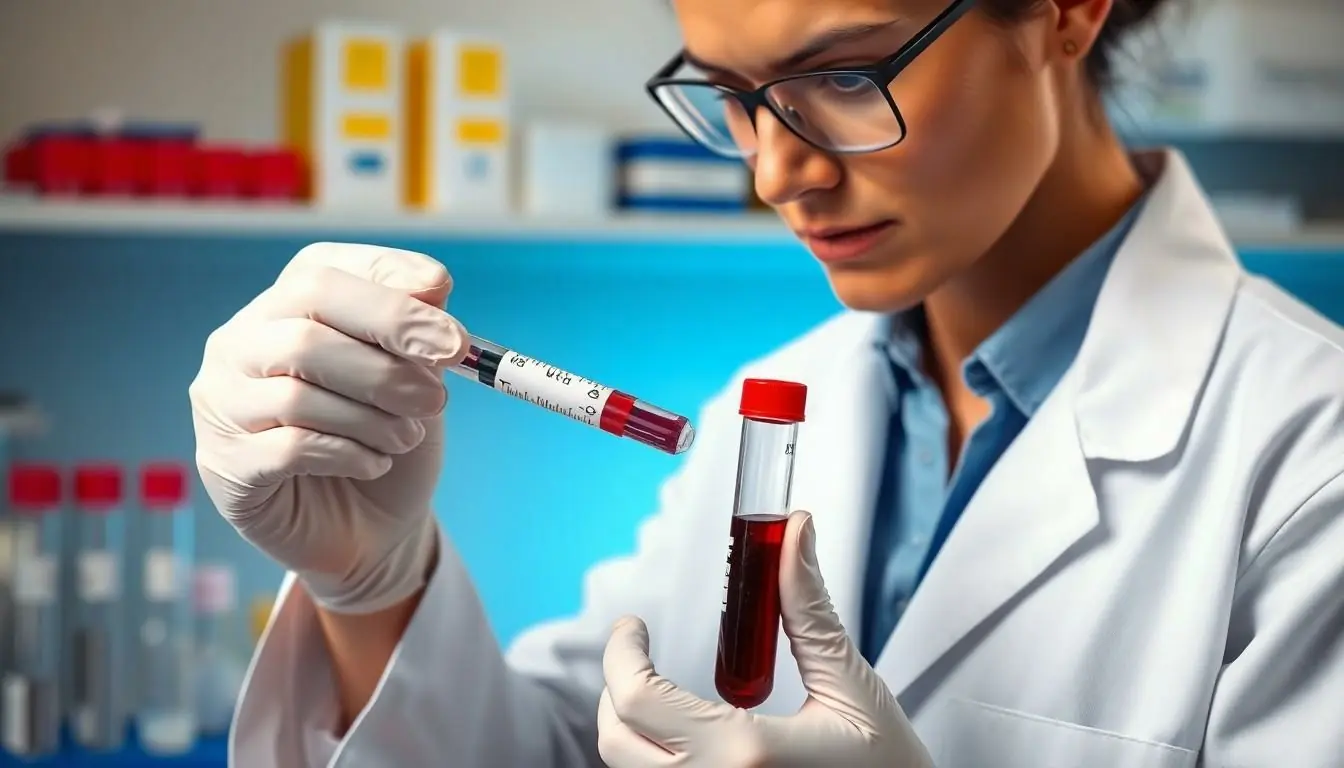Table of Contents
ToggleA biochemical pregnancy can feel like an emotional rollercoaster – one minute you’re celebrating a positive pregnancy test and the next you’re left wondering what happened. This early pregnancy loss occurs when a pregnancy ends shortly after implantation, often before it’s visible on an ultrasound.
While the term might sound like complex medical jargon, it’s actually quite common, affecting up to 30% of all pregnancies. Think of it as nature’s way of hitting the reset button when something isn’t quite right from the start. The only evidence of these pregnancies shows up in blood tests or home pregnancy tests, which detect the pregnancy hormone hCG before quietly disappearing within days or weeks.
Understanding Biochemical Pregnancy
A biochemical pregnancy represents a complex reproductive event where implantation occurs but the pregnancy ends before ultrasound confirmation. This early pregnancy loss creates unique challenges for medical professionals and patients alike.
Definition and Early Detection
Biochemical pregnancies occur when fertilized eggs briefly implant in the uterus, producing detectable levels of human chorionic gonadotropin (hCG). Home pregnancy tests identify hCG levels as low as 25 mIU/mL in urine, while blood tests detect even smaller amounts at 5 mIU/mL. The pregnancy hormone appears in measurable quantities 8-10 days after ovulation, allowing for detection before a missed period. Medical professionals confirm biochemical pregnancies through serial blood tests showing initially positive then declining hCG levels.
How It Differs From Clinical Pregnancy
Clinical pregnancies progress beyond the biochemical stage, displaying visible signs in ultrasound imaging. A gestational sac appears on transvaginal ultrasound at 4-5 weeks gestation, followed by a yolk sac at 5-6 weeks. Biochemical pregnancies end before reaching these ultrasound-detectable milestones. Clinical pregnancies demonstrate continuous rises in hCG levels, typically doubling every 48-72 hours, while biochemical pregnancies show irregular or declining hormone patterns. The absence of ultrasound findings despite positive pregnancy tests distinguishes biochemical from clinical pregnancies.
Signs and Symptoms
Biochemical pregnancies present distinctive indicators that differ from ongoing pregnancies through specific hormone patterns and physical manifestations. These signs often appear subtle and temporary, making them challenging to distinguish from a regular menstrual cycle.
HCG Hormone Levels
HCG levels in biochemical pregnancies follow an irregular pattern compared to viable pregnancies. Blood tests reveal hCG concentrations starting at 5-10 mIU/mL, rising briefly, then declining rapidly. A typical pattern shows:
| Timeline | HCG Level (mIU/mL) |
|---|---|
| Initial Detection | 5-25 |
| Peak Level | 50-100 |
| Decline | Below 5 |
The hormone levels fail to double every 48-72 hours as expected in viable pregnancies. Multiple blood tests demonstrate declining or plateauing hCG measurements, indicating pregnancy loss.
Physical Symptoms
Common physical indicators mirror early pregnancy signs but disappear quickly:
- Light spotting occurs 3-7 days earlier than expected menstruation
- Mild cramping localizes in the lower abdomen
- Breast tenderness lasts 2-3 days then subsides
- Menstrual-like bleeding starts within 1-2 weeks of positive test
- Pregnancy symptoms fade rapidly instead of intensifying
These symptoms appear less intense than those in viable pregnancies. The bleeding resembles a regular period though it might contain more clots or tissue. Cramping stays mild enough for over-the-counter pain relief.
Causes of Biochemical Pregnancy
Biochemical pregnancies occur due to various biological factors that interrupt early embryonic development. These early pregnancy losses stem from specific medical conditions affecting both genetic material and reproductive health.
Chromosomal Abnormalities
Chromosomal abnormalities account for 50-60% of biochemical pregnancy losses. Missing or extra chromosomes (aneuploidy) prevent proper embryo development after initial implantation. Common chromosomal issues include trisomy (three copies of a chromosome) monosomy (one copy instead of two) structural rearrangements. These genetic variations create non-viable embryos that stop developing in the earliest stages often before reaching 5 weeks gestation. The frequency of chromosomal abnormalities increases with maternal age particularly after age 35.
Other Medical Factors
Multiple medical conditions contribute to biochemical pregnancy occurrence. Uterine anomalies like fibroids polyps endometriosis affect proper implantation. Blood clotting disorders such as antiphospholipid syndrome reduce blood flow to developing embryos. Hormonal imbalances involving progesterone thyroid function impact pregnancy maintenance. Infections including bacterial vaginosis urinary tract infections compromise the uterine environment. Environmental factors like exposure to toxins radiation excessive caffeine consumption also increase biochemical pregnancy risk. Advanced paternal age correlates with DNA fragmentation in sperm reducing embryo viability.
| Risk Factor | Approximate Impact |
|---|---|
| Maternal Age >35 | 2-3x higher risk |
| Endometriosis | 30-50% increased risk |
| Thyroid Dysfunction | 2x higher risk |
| Clotting Disorders | 3x higher risk |
Testing and Diagnosis
Detecting a biochemical pregnancy requires specific testing methods to measure hCG levels in blood or urine. Early detection focuses on identifying hormone changes that indicate potential implantation.
Pregnancy Tests
Home pregnancy tests detect hCG levels in urine when they reach 25 mIU/mL or higher. Digital tests display clear “pregnant” or “not pregnant” results while traditional tests show two lines for positive results. Testing first thing in the morning provides the most accurate results due to concentrated urine levels. Multiple tests taken 48 hours apart reveal whether hCG levels rise appropriately – doubling every 2-3 days indicates a viable pregnancy. Tests showing faint lines that become lighter or disappear suggest a biochemical pregnancy.
Medical Confirmation
Blood tests measure exact hCG levels starting at 5 mIU/mL, providing more precise results than urine tests. Healthcare providers typically order two quantitative hCG blood tests 48-72 hours apart to track hormone progression. Laboratory analysis reveals whether levels increase normally or show irregular patterns indicating a potential loss. Transvaginal ultrasounds performed at 5-6 weeks gestation confirm if a gestational sac develops. The absence of visible pregnancy structures on ultrasound despite positive hCG tests points to a biochemical pregnancy diagnosis.
Impact on Future Fertility
A biochemical pregnancy leaves no lasting physical effects on reproductive health or future fertility outcomes. Research indicates that experiencing a biochemical pregnancy confirms the body’s ability to achieve implantation.
Recovery Timeline
Physical recovery from a biochemical pregnancy takes 2-3 days as hormone levels return to baseline. The menstrual cycle typically resumes within 4-6 weeks post-loss, though some individuals experience their next period within 30 days. Hormone levels drop rapidly, with hCG becoming undetectable in blood tests within 7-10 days. Physical symptoms like cramping or spotting resolve quickly compared to later pregnancy losses.
| Recovery Milestone | Timeline |
|---|---|
| Physical Recovery | 2-3 days |
| HCG Level Drop | 7-10 days |
| Menstrual Cycle Return | 30-42 days |
Planning Next Steps
Most healthcare providers recommend waiting for one complete menstrual cycle before attempting conception again. This waiting period allows for accurate dating of subsequent pregnancies. Tracking ovulation helps identify the optimal time for conception attempts. Medical consultation provides opportunities to address underlying health conditions or risk factors. Regular prenatal vitamins support reproductive health during this interim period.
| Recommended Action | Timing |
|---|---|
| Wait for Menstrual Cycle | 1 complete cycle |
| Resume Trying to Conceive | After first period |
| Medical Follow-up | Within 2-4 weeks |
Emotional Support and Coping
Experiencing a biochemical pregnancy creates significant emotional challenges that require comprehensive support. Partners facing this loss benefit from professional counseling services that specialize in early pregnancy loss. Support groups connect individuals with others who share similar experiences.
Professional Support Options
- Licensed therapists trained in pregnancy loss counseling
- Online support communities moderated by healthcare professionals
- Fertility clinic counselors who understand the medical aspects
- Religious or spiritual advisors offering faith based guidance
Self Care Strategies
- Practicing mindfulness meditation for 10 minutes daily
- Maintaining regular sleep patterns of 7 to 9 hours nightly
- Engaging in gentle physical activities like walking or yoga
- Expressing feelings through journaling or art therapy
- Following balanced nutrition guidelines from fertility specialists
Partner Communication Tips
- Setting aside dedicated time to discuss feelings openly
- Acknowledging that partners may grieve differently
- Creating shared rituals to honor the loss
- Seeking couples counseling when needed
Mental health professionals recommend waiting 2 to 3 weeks before making major life decisions after a biochemical pregnancy. Support organizations like RESOLVE provide free resources including educational materials virtual support meetings peer mentoring programs. Medical providers often connect patients with local counselors who specialize in reproductive grief.
Many fertility clinics incorporate emotional support into their standard care protocols offering both individual counseling sessions group workshops. Online forums provide 24/7 access to community support while maintaining privacy anonymity.
Conclusion
Understanding biochemical pregnancies helps individuals navigate this challenging reproductive experience with greater clarity and emotional preparedness. While these early pregnancy losses can be emotionally taxing they’re a natural occurrence that doesn’t impact future fertility.
Medical advancements in testing and diagnosis have made it possible to detect and understand these pregnancies better. With proper support emotional healing and physical recovery individuals can move forward with renewed hope for future conception attempts.
Support systems including healthcare providers counselors and support groups remain vital resources for those experiencing biochemical pregnancies. Armed with knowledge and understanding affected individuals can better cope with their experience and make informed decisions about their reproductive journey.





